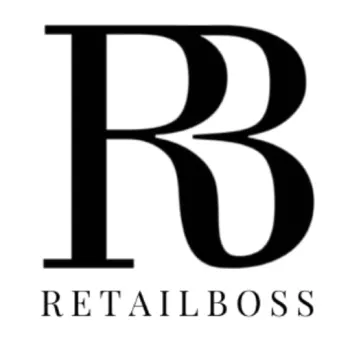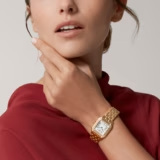The fashion industry eco-system is in a state of rapid change, so creativity alone will no longer cut it. You can be the most talented designer in the room—classically trained (or self-taught), passionate and determined, but still struggle to turn your collection into a consistent source of income.
That’s not a personal failure. It’s a structural gap in how the industry prepares you.
Fashion school probably taught you how to sketch, drape, draft patterns, and design beautifully. But it may not have shown you how to build and grow a business. So, you stepped into this world of designpreneurship, eager and full of vision, but without a clear roadmap for longevity and profitability.
If that sounds familiar, you’re not alone. Many designers in their start-up stage endlessly create, post content and produce collections without a focused brand strategy. This inevitably leads to burnout because the foundation they’re building upon is incomplete.
The question to ask yourself is this, “Am I building a lasting brand or simply trying to keep up with the algorithm?”
What Traditional Education Still Isn’t Emphasizing
Raise your hand if you’ve wrestled with any of these steps:
- Identifying and interacting with your true core customer base
- Building anticipation before you sample and produce your designs
- Making sure your collection is positioned for profit from day one, not just beautiful
The design part may have come easily for you, but skipping foundational elements is beyond risky. Without structure and systems, it’s easy to fall into a reactive cycle rather than a constructive one—
where you second-guess your prices,
design too many pieces,
and pour energy into content that doesn’t attract your customers.
And that pressure can intensify until creativity starts to feel like a burden, causing you to consider walking away from a dream that deserves a chance to thrive.
According to The State Ecommerce Fashion Industry 2025 report by Shopify, the fashion and apparel industry continues to be dominant, achieving “a remarkable $781 billion market value—a number expected to double within six years.” Ample market share is available for the taking, yet over 50% of small fashion brands fail within their first five years because of operational gaps and unclear positioning.
There’s no better time than now to rethink how you’re running your business.
Let’s shift from overwhelm to alignment so you can build a brand that will last the test of time.
What Thriving Fashion Founders Are Doing Differently
There is a movement taking shape. The new generation of savvy designers are showing up with strategy, and a splash of soul. They’re no longer waiting for gatekeepers to discover their brand. Instead, they’re executing with their core intentions in mind, building in front of small but loyal audiences through storytelling, and preselling profit-conscious assortments, one capsule collection at a time.
Designer Tips:
- Launch your next collection in front of a warm audience rather than trying to appeal to everyone.
- Engage in conversations that can lead to exposure and encourage sales.
- Use storytelling (backstory, designer journey, brand intentions/solutions, etc.) to deepen connection and trust.
Even if it feels like it, you’re not designing for everyone. And you’re not just creating collections; you’re catering to a discerning circle of core customers who can be the bedrock of your own movement.
What’s the difference? It makes all the difference.
Successful designers are not more talented than you. They’re not guessing—they’re operating in alignment and building on purpose. Your shift is coming, and it won’t depend on great lighting or slicker marketing. It’ll spark from a decision to lead your brand with renewed focus instead of fear.
Owning Your Identity Shift
There comes a point in every designer’s journey when you realize that your natural ability to create is not what matters most. Strategy is. The transformation I see in the designpreneurs I work with doesn’t begin with fashion shows, bulk production or paid ads—it begins with perspective.
The moment you make that decision to stop scrambling, second-guessing, and being reactive—and to start leading with certainty, your entire business will begin to shift.
Designer Tips:
- Develop your brand persona (DNA), messaging and a cohesive visual identity.
- Embrace your distinct point of view and resist the urge to cater to the masses.
- Identify launch milestones and create repeatable systems instead of chasing the next trending idea.
Clarity gives your creativity room to breathe so you can launch from a grounded place, not a frantic one. The goal is to align your brand vision with a sound strategy so you can elevate your label from hobbyist-level to professional. This kind of shift isn’t always easy, but it is always worth it.
The Influencer Enigma
Maybe you’ve already been showing up with consistency but are not seeing sales. If that’s the case, you may have fallen into what I call the “influencer trap.”
Influencers chase attention.
Brands cultivate trust.
Marketing like an influencer may bring views and likes, but it rarely brings brand loyalty. If your messaging is unclear or your customer base can’t easily identify what your brand stands for and why it matters right now, meaningful business growth will likely continue to be a challenge.
A strong brand doesn’t just gather surface-level attention. It connects with hearts. That’s where my C.O.R.E. Method comes in.
The C.O.R.E. Method
C.O.R.E. is a framework created to help emerging designers get clarity about where they fit in the market, so you can shape your brand in a way that reflects your creativity while fostering real business growth. It brings your brand into alignment around your intentions for your business so you can connect with your customers in a way that matters to them, while making an impact to your bottom-line.
Let’s walk through it together.
C — Consistency
Dependability builds trust, and trust drives sales.
When someone encounters your business on social media, reads an email from you, or receives your products, they should immediately sense a cohesive brand voice, brand mood and brand values.
For example, Jerry Lorenzo’s label, Fear of God resonates with consumers because his calming, yet powerful aesthetic and messaging stays rooted in a singular, intentional point of view. Nothing feels random. This stability builds confidence in his audience.
Question: If a potential customer visited three touchpoints of your brand today (social, website, etc.) would they all feel as if they’re telling the same story?
O — Offering
Fashion is emotional. Therefore, your offering goes deeper than your designs. It involves the transformation, the energy, the sense of identity your collection evokes.
Your brand becomes meaningful when it speaks to how your customers desire to feel.
Take Amina Jillil, for instance. Her footwear brand leads with a stirring promise—bold femininity expressed through sculptural design. It’s a declaration of audacious presence, designed for women who want to feel both elegant and unforgettable.
Question: Ready to go deeper? What does your collection help your customers believe about themselves?
R — Relevance
Being relevant doesn’t mean being trendy. It means being essential.
When your brand reflects your customer’s values, lifestyle and aspirations, it becomes part of her identity. It speaks to how she is showing up in the world, what she’s dreaming about and the pieces she joyfully invests in.
Telfar understood this masterfully. His bags have become a cultural symbol of access, inclusion and expression. They aren’t just accessories. Each one makes a statement.
Question: How will you stay in touch with your audience so you can discover what they care most about?
E — Experience
How a customer experiences your brand should turn their trust into loyalty.
Your customer’s journey doesn’t end at checkout. It flows though every detail—how your confirmation email sounds, the care you put into your packaging, and how soon you respond to questions or concerns.
Think about Brandon Blackwood. His thoughtful unboxing experience, community-oriented language, and quality touchpoints create a sense of belonging which makes his customers feel seen.
Question: Where can you add delight, warmth or intentionality into your customer’s journey?
When Your C.O.R.E. Is Active and Aligned
You don’t need a massive following or unlimited funds to implement the C.O.R.E. Method. Every small, focused step builds momentum.
When every part of your brand reflects the principles, things begin to click:
- Your customer base knows what to expect and starts anticipating what’s next.
- Your content becomes easier to create because your messaging is clear.
- You attract people and opportunities that are truly aligned with your brand vision.
- You build not only sales, but loyalty, referrals, social capital and brand equity.
This is the point where ease of process and consistent growth becomes inevitable.
Final Thoughts
The path of an independent designer can be filled with both possibility and pressure. But clarity is what’ll transform the pressure you may be feeling in this season into progress you can measure.
Today’s as good day as any to begin strengthening your C.O.R.E. Your brand deserves fresh intentionality, structure and strategy as much as it deserves creativity and soul.
Though you may have begun as just a naturally talented designer, you are evolving into a greater founder, a purpose-driven visionary and a voice that’ll ignite a movement.
For strategic support and expert guidance on growing your brand, explore Label Launch Blueprint here — and take my Launch Readiness Assessment here.

















